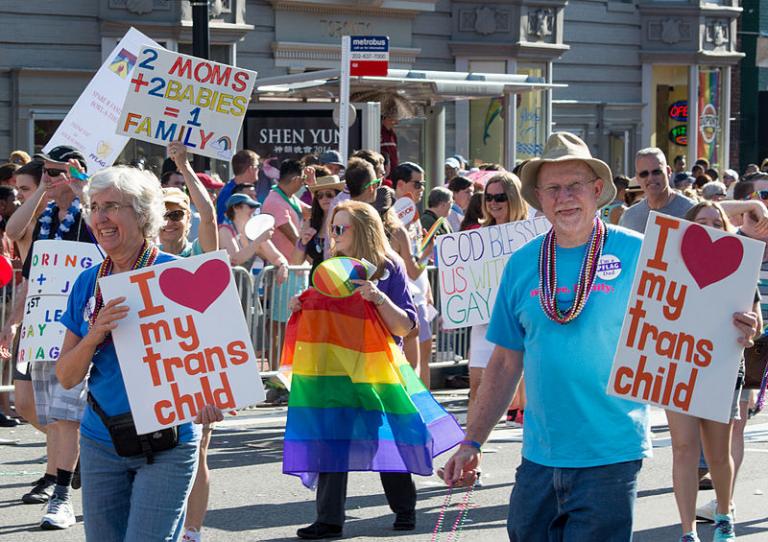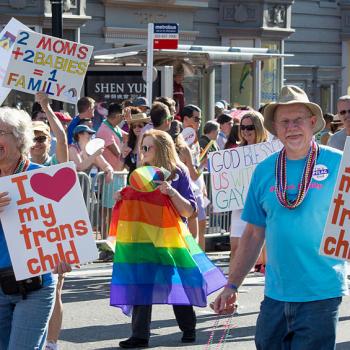
But the Equality Act?
That’s entirely different. Nothing about this bill allows for that more-moderate interpretation.
Let’s look at the text:
In the bill’s definitions:
The term ‘gender identity’ means the gender-related identity, appearance, mannerisms, or other gender-related characteristics of an individual, regardless of the individual’s designated sex at birth.
And
The term ‘sex’ includes—
“(A) a sex stereotype;
“(B) pregnancy, childbirth, or a related medical condition;
“(C) sexual orientation or gender identity; and
“(D) sex characteristics, including intersex traits.
The key action of the bill is to add the parenthetical “including sexual orientation and gender identity” in every instance in which “sex” appears as a reason for which discrimination is prohibited. What does it mean to discriminate on the basis of sexual orientation or gender identity, vs. merely making reasonable differentiations? One can presume that the “findings” are meant to provide the key to interpretations. Among these are references to discrimination against nonbinary individuals by homeless shelters and rejection of same-sex couples by some foster care/adoption agencies. Other than this, one is left to presume that the demands that activists make — for participation by trans-girls in girls’ sports without limits — are intended to be acceded to in this law.
Other provisions include
- The explicit statement that
in a situation in which sex is a bona fide occupational qualification, individuals are recognized as qualified in accordance with their gender identity.
- The requirement that
(with respect to sex) pregnancy, childbirth, or a related medical condition shall not receive less favorable treatment than other physical conditions
- The specific provision of access to gender-identity based shared facility:
(with respect to gender identity) an individual shall not be denied access to a shared facility, including a restroom, a locker room, and a dressing room, that is in accordance with the individual’s gender identity.”
and
- The overriding of the Religious Freedom Restoration Act:
The Religious Freedom Restoration Act of 1993 (42 U.S.C. 2000bb et seq.) shall not provide a claim concerning, or a defense to a claim under, a covered title, or provide a basis for challenging the application or enforcement of a covered title.”
What’s the consequence of this legislation?
In the first place, girls and women will no longer be able to maintain sex-segregated athletic competitions or, really, any facilities of any kind. As it is, in high schools, boys-who-identify-as-girls are allowed to compete on girls’ teams, and girls are told to suck it up and that it is no more “unfair” for them to compete with a “girl” with testosterone than it is to compete with a girl who, by the lottery of genetics, is taller than average. With respect to adults, there are already heated debates about whether the requirements for specified lengths of time taking cross-sex hormones can truly erase the advantages of male puberty. But would an athletic league even be able to enforce these minimal requirements under this law?
In the second place, the law would place new requirements on medical providers. A Catholic hospital had refused to perform a hysterectomy for someone for whom it was part of a transition surgery rather than medically necessary, and experts believe that the new anti-discrimination requirements would mandate this.
Likewise, the provision “pregnancy, childbirth, or a related medical condition shall not receive less favorable treatment than other physical conditions,” opens itself up for all manner of interpretations, most crucially in terms of the vagueness of the phrase “related medical condition.” Given how comprehensively Congress likes to define provisions when it matters, this suggests that it wants to create a situation in which the true significance of the bill is not recognized until the Biden administration creates the regulations which interpret this — and that can include everything up to mandating that insurers cover abortion and doctors perform abortion.
And in the third place, the stipulation that the Religious Freedom Restoration Act is effectively repealed with respect to this bill raises yet more worries. That law, after all, came about because of Supreme Court rulings that said that generally-applicable laws did not necessarily violate the Constitution’s guarantee of religious freedom even if it impacted a religious group; if American Indians’ use of peyote was prohibited by drug laws, too bad, so sad, but the law wasn’t unconstitutional. The RFRA was meant to remedy this by providing additional protections.
This provision is similar to the Do No Harm Act of last year, which Kamala Harris was a vocal supporter and chief sponsor of. This bill specified that the RFRA would not apply in any case where it would contravene the Civil Rights Act (as amended to include sexual orientation or gender identity), or where it would limit “access to, information about, referrals for, provision of, or coverage for, any health care item or service” (which the Biden administration would define to include contraception and abortion), or “to the extent that application would result in denying a person the full and equal enjoyment of a good, service, benefit, facility, privilege, advantage, or accommodation, provided by the government.”
How far would the government go in its interpretation? Would it require that Catholic churches ordain women? That they perform marriages for same-sex couples? If this seems too much a stretch, it is far more likely that Catholic hospitals and healthcare providers would be compelled to perform abortions and surgeries related to transitions or be hit with ruinous fines or compelled to shut down.
(See “What to Know About the Equality Act” at First Things, “Biden’s Equality Act is a danger to women’s and conscience rights” at the New York Post, and “Why The ‘Equality Act’ Democrats Want To Pass This Week Should Really Be Called The ‘Destroy Our Daughters Act’” at The Federalist for more.)









